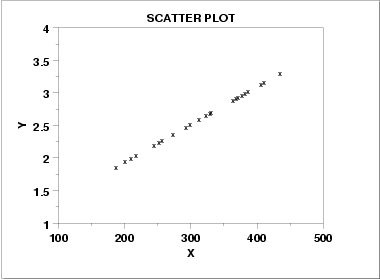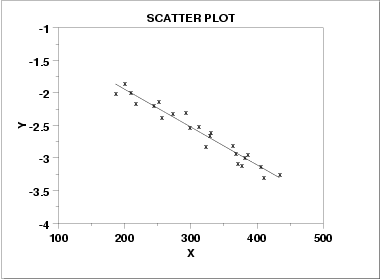Unit 4: Statistics & Test Construction (cont.)
| Scatterplot: A graphed cluster of dots, each
which represents the values of two variables. The slope of the
dots represents the direction (+ or -) of the relationship while the
amount of "scatter" suggests the strength of the correlation. Correlation Coefficient (r): A statistical measure of the extent to which two factors vary together, and thus how well either factor predicts the other. The statistic, r, is always between -1.00 and +1.00. A Positive correlation coefficient means that as one variable increases, so does the other.  A Negative correlation coefficient means that as one variable increases, the other decreases (i.e., an inverse relationship).  |
Regression to the Mean: The tendency for extreme or unusual
scores to fall back (regress) toward their average. Statistical Significance: Probability that the results obtained were due to chance (represented by the value of 'p'). In psychology, it is standard that a p-value of .05 or less means that results were statistically significant (i.e., not due to chance). t-test: A statistical procedure designed to test the difference between the means of two groups
Test Construction See handout on the Normal Curve |